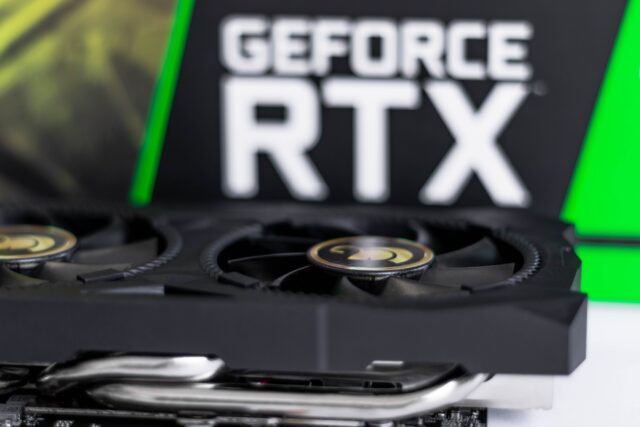Normal GPU Temp: What’s Safe and What’s Not?

Understanding the normal temperature range for your GPU (Graphics Processing Unit) is crucial for maintaining the health and longevity of your PC. This article delves into what constitutes a normal GPU temperature during various operations, including gaming, and what signs indicate that your GPU might be overheating. By the end of this article, you’ll have a comprehensive understanding of GPU temperatures, helping you keep your PC running efficiently and safely.
Contents
- 1 Understanding GPU Temperatures
- 2 Cooling Solutions and Maintenance
- 3 Conclusion
- 4 FAQ
- 4.1 What Is the Maximum Safe Temperature for a GPU?
- 4.2 How Can I Monitor My GPU Temperature?
- 4.3 Does Room Temperature Affect GPU Temperature?
- 4.4 Can Overclocking Affect GPU Temperatures?
- 4.5 How Often Should I Clean My GPU to Maintain Optimal Temperatures?
- 4.6 Is It Normal for GPU Temperature to Spike Suddenly During Gaming?
- 4.7 Can Updating GPU Drivers Affect Temperature Performance?
Understanding GPU Temperatures
Navigating the intricacies of GPU temperatures is an essential part of ensuring optimal performance and longevity of your gaming or workstation PC. In this segment, we delve into the various factors that influence GPU temperatures, providing you with insights that will help you better understand and manage the thermal performance of your graphics card.
What Determines GPU Temperature?
GPU temperatures are influenced by several factors, including the GPU model, the intensity of the task being performed, the efficiency of the cooling system, and the ambient temperature. High-performance GPUs and demanding tasks like gaming or video rendering can push temperatures higher.
Normal GPU Temperatures During Gaming
When gaming, it’s common for GPUs to reach temperatures between 70°C to 85°C (158°F to 185°F). However, this can vary based on the game’s requirements and the GPU’s design. It’s important to note that occasional spikes above this range can occur, but sustained temperatures above 85°C may be a cause for concern.
Signs of Overheating
If your GPU consistently exceeds 85°C, it may be overheating. Symptoms include system crashes, graphic glitches, or automatic shutdowns. Overheating can shorten the lifespan of your GPU and affect overall system performance.
Cooling Solutions and Maintenance
In this section, we’ll explore various strategies and tips to enhance the cooling efficiency of your GPU. Proper cooling is not just about selecting the right hardware; it’s also about regular maintenance and optimizing your PC’s internal environment. These insights will assist you in achieving a balance between performance and temperature, ensuring your GPU operates within the best possible conditions.
Improving Airflow in Your PC Case
Ensuring good airflow within your PC case is essential. This can be achieved by arranging internal cables neatly and using additional case fans to help dissipate heat more effectively.
Choosing the Right Cooling System
There are two primary cooling systems for GPUs: air cooling and liquid cooling. Air cooling is common and usually sufficient for most users. Liquid cooling systems, while more complex and expensive, offer superior cooling capacity, especially for high-end GPUs or overclocking scenarios.
Regular Maintenance
Regular cleaning of dust from your PC and the GPU’s cooling fans and heat sinks is essential. Reapplying thermal paste every few years can also improve heat transfer efficiency.
Conclusion
Understanding and monitoring your GPU’s temperature is key to maintaining your PC’s health. Normal operating temperatures for GPUs typically range from 70°C to 85°C during gaming, but keeping them as low as possible within this range is ideal. Implementing good cooling solutions and regular maintenance can significantly help in keeping these temperatures in check.
FAQ
What Is the Maximum Safe Temperature for a GPU?
For most GPUs, the maximum safe temperature hovers between 85°C and 90°C. Operating beyond this limit can significantly increase the risk of hardware damage and performance degradation. It is crucial for the health of your GPU to keep temperatures below this range, employing effective cooling strategies to mitigate overheating risks.
How Can I Monitor My GPU Temperature?
Monitoring GPU temperatures is essential for maintaining optimal performance and can be achieved using software tools like MSI Afterburner or those provided by GPU manufacturers. These applications not only offer real-time temperature readings but also allow for the adjustment of various parameters to ensure that your GPU operates within a safe thermal range.
Does Room Temperature Affect GPU Temperature?
Absolutely, the ambient room temperature plays a significant role in determining your GPU’s temperature. A cooler room can lead to a cooler GPU, as the external temperature affects the efficiency of heat dissipation. Thus, managing room temperature is an indirect yet effective way to control your GPU’s thermal performance.
Can Overclocking Affect GPU Temperatures?
Overclocking your GPU increases its processing frequency, which in turn elevates temperature. This makes efficient cooling more important than ever to prevent potential overheating. If you’re overclocking, be vigilant about monitoring temperatures and consider enhancing your cooling setup to handle the increased thermal load.
How Often Should I Clean My GPU to Maintain Optimal Temperatures?
To ensure your GPU operates efficiently, regular cleaning is recommended every 3 to 6 months to remove dust and debris that can obstruct airflow and reduce cooling efficiency. The exact frequency might vary based on your environment; places with higher dust levels might necessitate more frequent cleanings.
Is It Normal for GPU Temperature to Spike Suddenly During Gaming?
It’s normal for GPU temperatures to experience temporary spikes during intensive gaming sessions due to increased demand on the GPU. However, prolonged high temperatures or system instability may indicate inadequate cooling or airflow, necessitating a review and potential upgrade of your cooling solutions.
Can Updating GPU Drivers Affect Temperature Performance?
Updating GPU drivers can have a positive impact on temperature performance. Manufacturers often optimize thermal management in new driver releases, improving your GPU’s efficiency and potentially reducing overheating risks. Regularly updating your drivers is a good practice for maintaining optimal GPU performance and thermal conditions.
Related Posts

New Graphics Card Leads to Black Screen: How to Fix It?